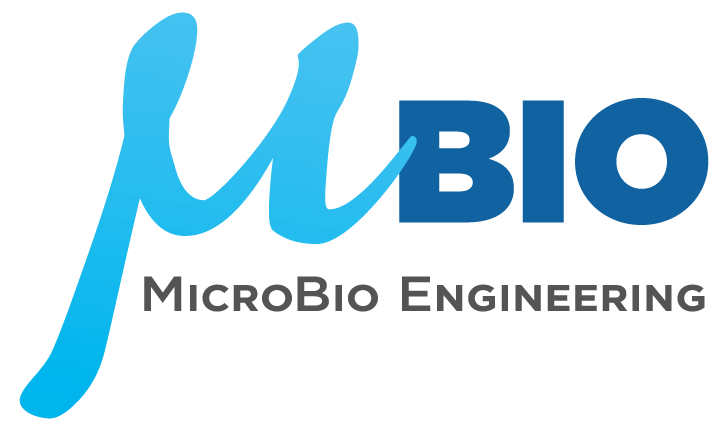FAQ: Backyard biofuels? Algae production in pools, and ponds
You step outside after a long work week, ready to take a relaxing dip in your pool. A few strides later, much to your dismay, you see the once crystal blue water clouded with algae. Not again! Frustration quickly dissipates as you remember an interesting news story about algae biofuels and decide to use these microorganisms to your benefit.
Algae are small aquatic plants that multiply rapidly in warm and sunny conditions through photosynthesis. Algal blooms can occur seemingly overnight in unbalanced pool conditions. Their rapid growth rate and universal presence make algae a tempting backyard science project. Why not take advantage of their quick growth and generate biofuels in your backyard?
Regular harvesting and processing of algae grown in a standard pool (10ft by 20ft), could produce a maximum of 36.5 kg or 10 gallons (38 L) of oil per year. This is assuming a very high algae production rate of 20 g/m2-day annual average biomass productivity and 25% lipid content, and does not take into account necessary input costs such as nutrients, carbon dioxide storage and distribution, mixing energy, separation of the algae from the water, drying, and processing of the algal biomass into biofuel (Davis et al, 2016). All of these steps make creating an efficient algal biofuel system in your backyard using a standard pool improbable at best.
Case studies conducted by MicroBio Engineering Inc., for the Energy Biosciences Institute in 2010 assessed the economics of microalgae biofuel production compared to fossil fuel production. The total cost of production of a barrel of oil at a 400 hectare (ha) algal biofuel facility is $302 (Lundquist et al, 2010). Considering there are 42 gallons of oil in a barrel, this comes out to $7.19 per gallon, a far cry from the $1.63 per gallon of conventional gasoline recorded in December 2016 at the New York harbor (U.S. Energy Information Administration). Even the most efficient algal biofuel facility operating on 1,000 ha scale falls short in producing competitive algal biofuel at current petroleum prices. While algae will likely contribute to future liquid fuel production, the technologies that will make this a reality are still in development by researchers.
The good news is algae are useful in other ways. Algae can be grown on non-potable water in pond systems located on non-arable land using nutrients from wastewater. Growing algae on wastewater recovers nutrients, treats wastewater contaminated with nitrogen and phosphorus, and decreases wastewater treatment costs. Bacteria present in treatment ponds break down organics to yield carbon dioxide, nitrogen, and phosphorus to fertilize algae which provide oxygen to the bacteria. This relationship allows the recycling of nutrients while addressing the energy costs and demands associated with global crop fertilizer demands, expected to increase 1.6% annually from 2015-2019 (Food and Agriculture Organization of the United Nations).
Further, anaerobic digestion of wastewater-derived microalgae provides biogas, most notably in the form of methane, which can generate on site electrical power or thermal heat (Ward et al, 2014). Although limitations exist, integrating anaerobic digestion into an algae-based wastewater treatment system allows for improved energy production and potential for a sustainable biofuel refinery. A 100 ha wastewater treatment facility can produce biogas at the cost of $0.62 per kWh (Lundquist et al, 2010).
Algae are also popular in the supplement industry for their phytochemicals such as chlorophyll, vegan sources of omega-3 fatty acids in the form of eicosapentaenoic acid (EPA) and docosahexaenoic acid (DHA), and minerals, particularly iodine (Yaakob et al, 2014; Karino and Haijima, 2004). In fact, fish oil benefits arise as a result of algal consumption in fish which makes algal supplementation beneficial in commercially important aquaculture farms (Shields, and Lupatsch, 2012; Muller-Feuga, 2000; FAO of UN, 1996). Algal supplementation is also an area of research interest in terrestrial livestock (Stamey, et al, 2012). Macroalgae, commonly known as seaweed, have been used in eutrophic waters as bioremediation agents (Yarish et al, 2004).
References
Davis, R., Markham, J., Kinchin, C., Grundl, N., Tan, E.C.D., Humbird, D. 2016. Process Design and Economics for the Production of Algal Biomass: algal biomass production in open pond systems and processing through dewatering for downstream conversion. National Renewable Energy Laboratory. www.nrel.gov/research/publications.html
Food and Agriculture Organization of the United Nations. 2016. World Fertilizer Trends and Outlook to 2019. FAO, Rome.
Karino, K., Haijima, Y. 2004. Algal-diet enhances sexual ornament, growth and reproduction in the guppy. Behaviour. 141(5): 585-601.
Neori, A., Chopin, T., Troell, M., Buschmann, A.H., Kraemer, G.P., Halling, C., Shpigel, M., Yarish, C. 2004. Integrated aquaculture: rationale, evolution and state of the art emphasizing seaweed biofiltration in modern mariculture. Aquaculture. 231: 361-391
Lundquist, T.J., Woertz, I.C., Quinn, N.W.T., & Benemann, J.R. 2010. A realistic technological and economic assessment of algae biofuels. Report prepared for the BP Energy Biosciences Institute. Berkeley, California, 154.
Lavens, P., Sorgeloos, P. 1996. Manual on the production and use of live food for aquaculture. Food and Agriculture Organization of the United Nations. Rome.
Muller-Feuga, A. 2000. The role of microalgae in aquaculture: situation and trends. J. Applied Phycology. 12.3-5: 527-534.
Shields, R. J., Lupatsch, I. 2012. Algae for aquaculture and animal feeds. J. Anim. Sci. 21: 23-37.
“Spot prices for crude oil and petroleum products.” U.S. Energy Information Administration. Web. 14 Feb. 2017.
Stamey, J.A., Shepherd, D.M., de Veth, M.J., Corl, B.A. 2012. Use of algae or algal oil rich in n-3 fatty acids as a feed supplement for dairy cattle. Jour. of Dairy Sci. 95 (9): 5269-5275.
Ward, A.J., Lewis, D.M. Green, F.B. 2014. Anaerobic digestion of algae biomass: a review. Algal Research. 5: 204-214.
Yaakob, Z., Ehsan, A., Zainal, A., Mohamad, M., Takriff, M.S. 2014. An overview: biomolecules from microalgae for animal feed and aquaculture. J. Bio. Resear. 21:6 .

